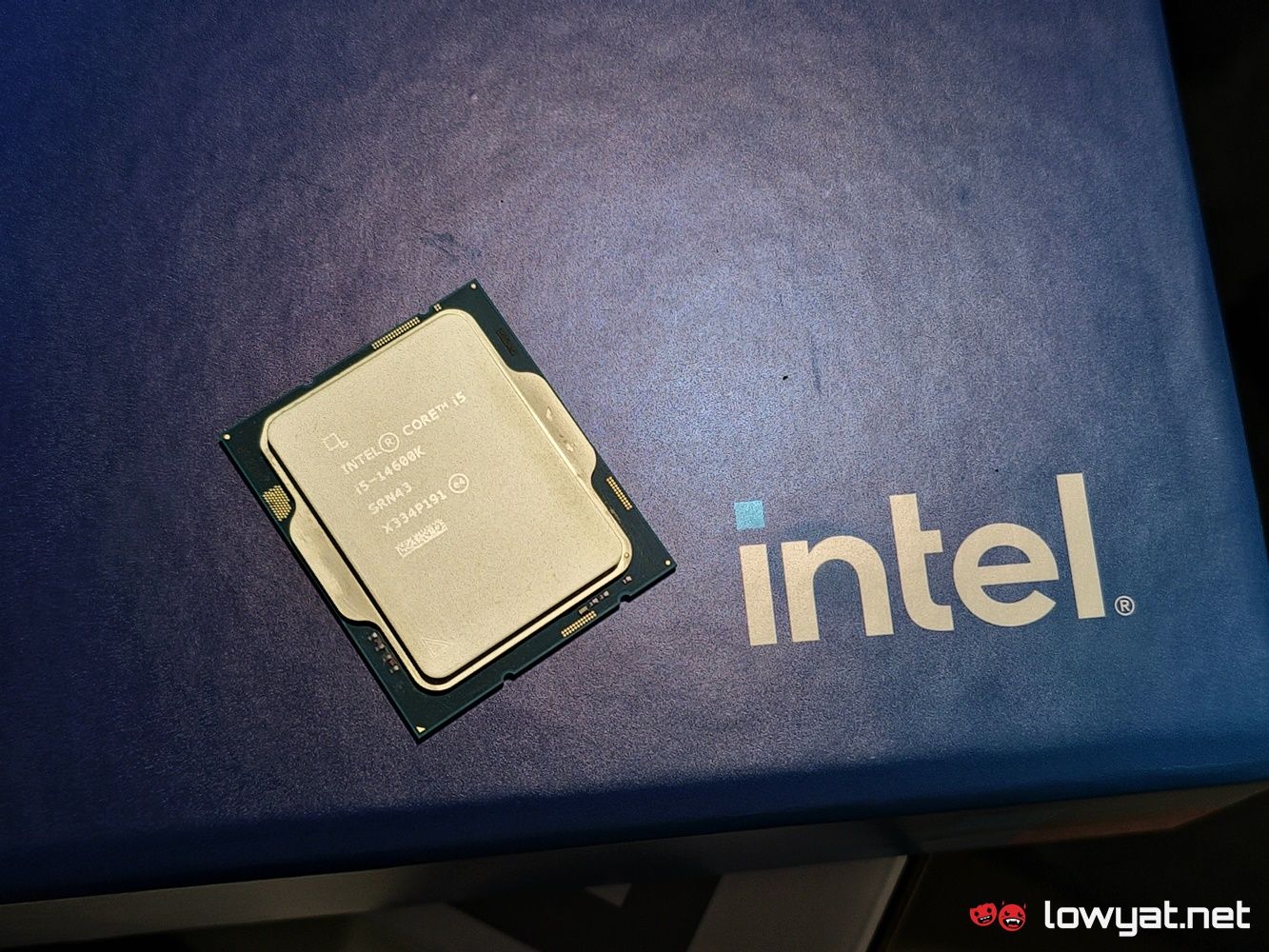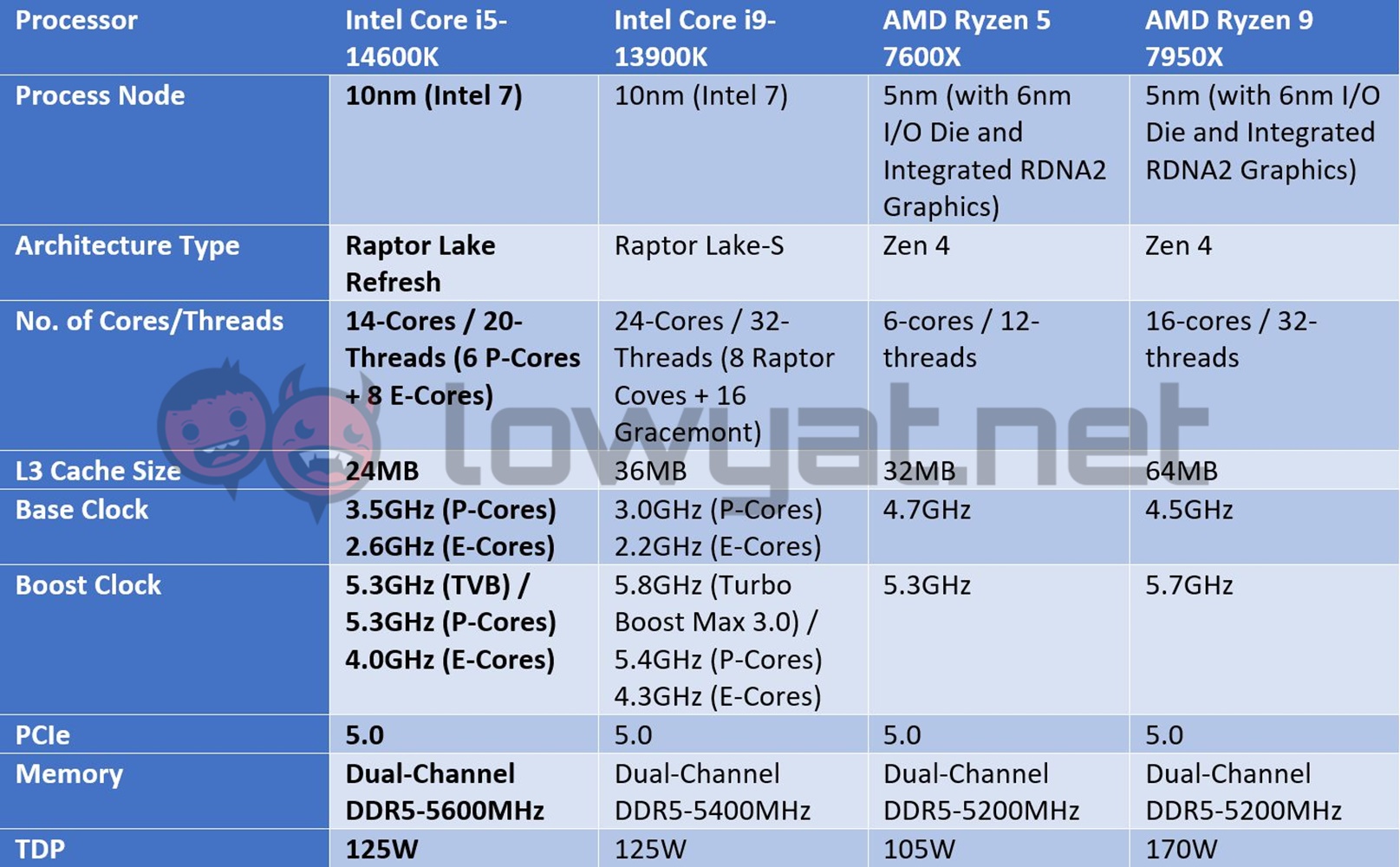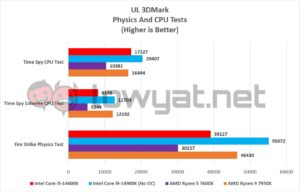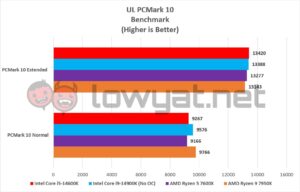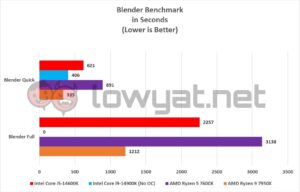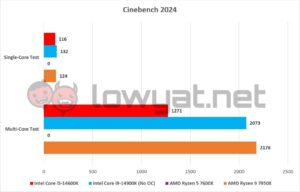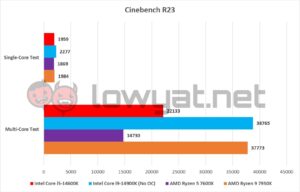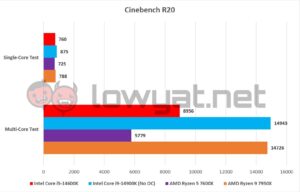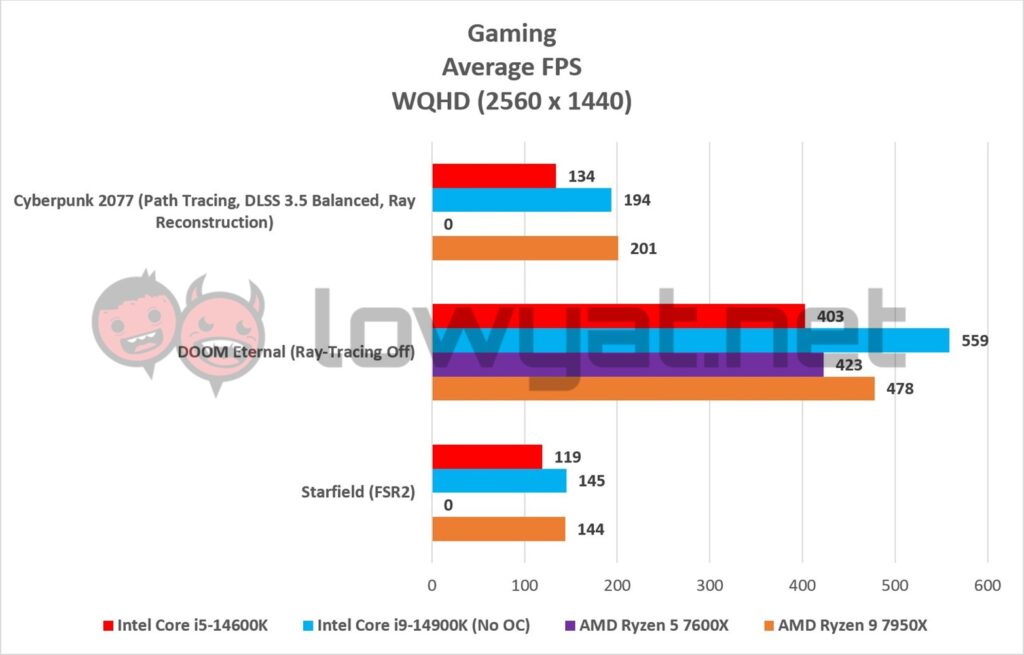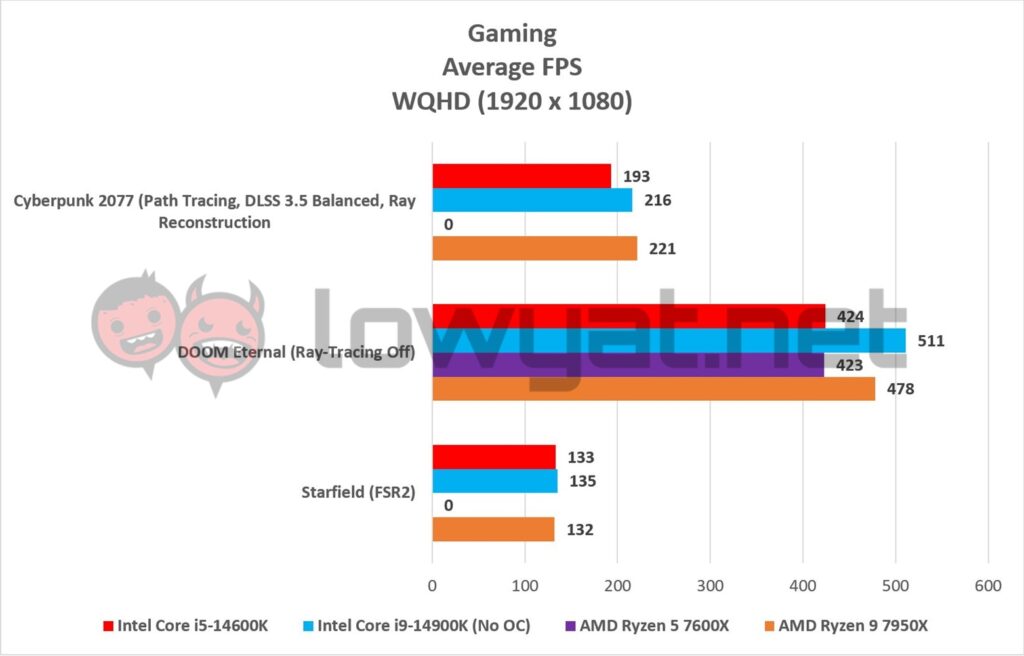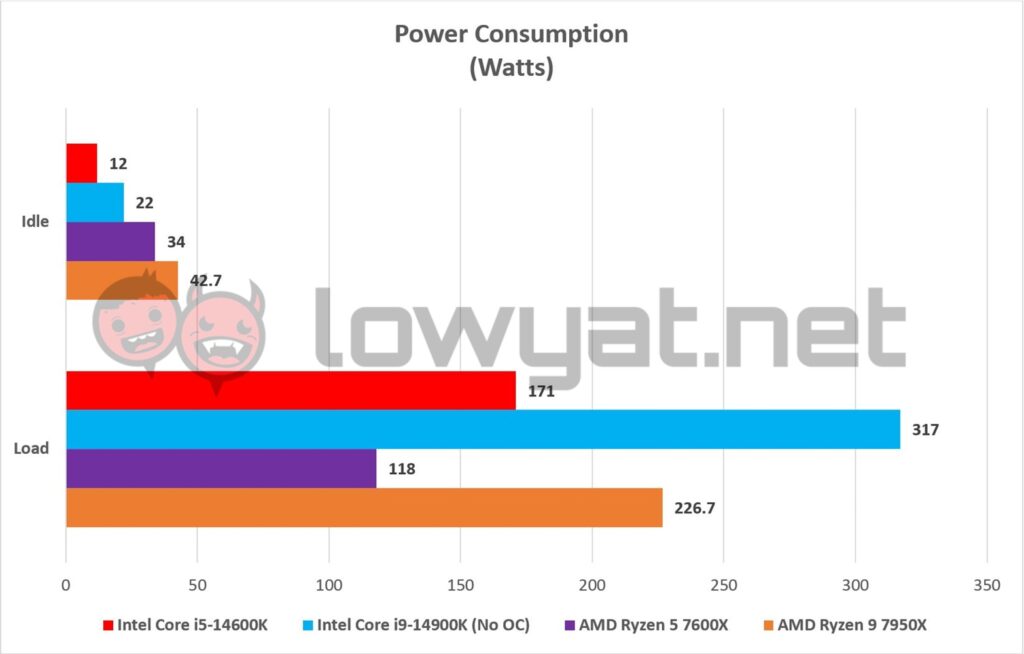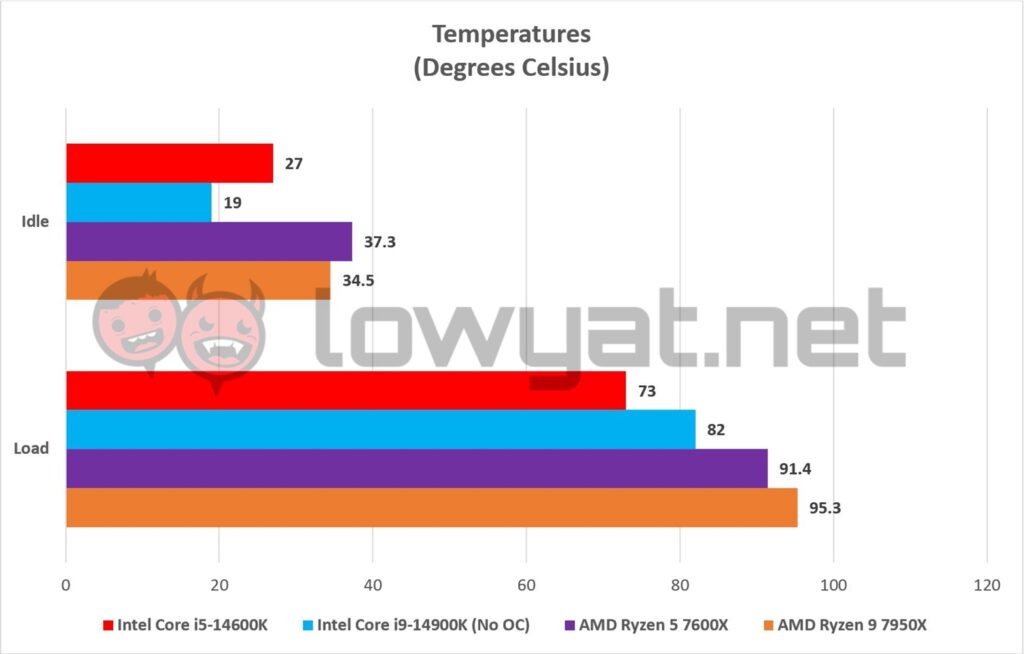As the year comes to an end, we thought it would be nice to round off the reviews for components with one from team Intel. Specifically, the mid-range Core i5-14600K.
Admittedly, this review comes to you a little late but with Meteor Lake for desktop still a little ways before an actual launch, I think it still warrants a special mention, at least in terms of the performance it offers and who knows? Maybe what I have found may convince you to trade up from the 12th Gen 12600K or even that Zen 3-based AMD Ryzen 5 CPU you’ve been using for the past several years now.
Specifications
Like the more powerful 14900K, the 14600K is basically a rehash of the 13600K, just with slightly better boost clocks. By slightly better, it’s about 100MHz for both the P-Cores and E-Cores, which is a very meagre amount.
Beyond that, the rest of the specifications of the 14600K pretty much remains identical – It’s got the same core count, the same L3 Cache size, the same dual-channel memory support for DDR5 and DDR4, the latter not listed on in the chart above. As well as the same 7nm die lithography.
Testbench
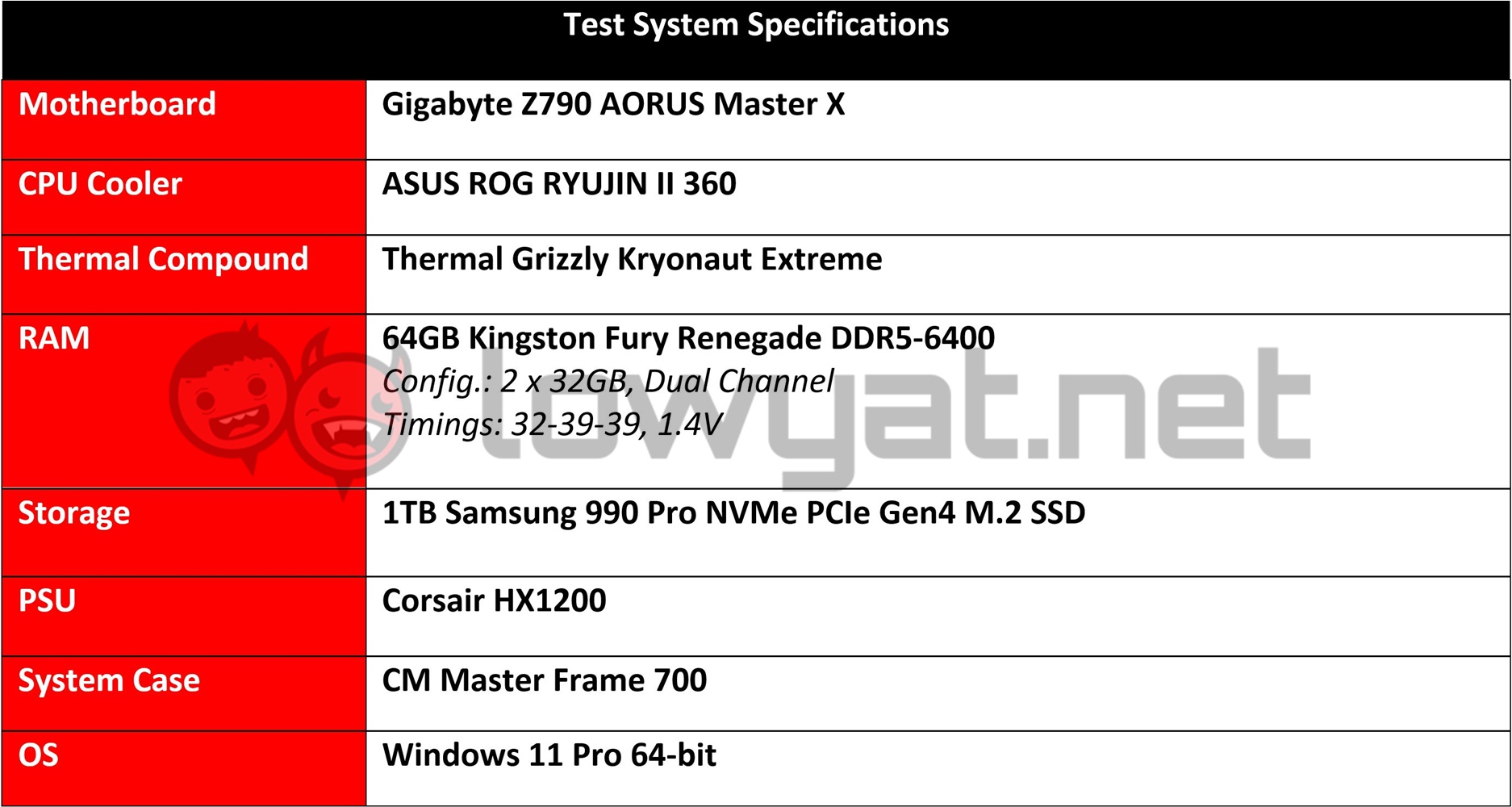 Given how much the 14600K is technically a carbon copy of its Raptor Lake predecessor, it’s only fitting that the benchmarks include the AMD Ryzen 5 7600X, given that it is the most obvious and, at current, the only competitor to Team Blue’s current-gen mid-range welterweight. On top of that, and thanks to the generosity of Gigabyte, I am using the Z790 AORUS Master X, the same enthusiast-grade motherboard that I used while testing the 14900K.
Given how much the 14600K is technically a carbon copy of its Raptor Lake predecessor, it’s only fitting that the benchmarks include the AMD Ryzen 5 7600X, given that it is the most obvious and, at current, the only competitor to Team Blue’s current-gen mid-range welterweight. On top of that, and thanks to the generosity of Gigabyte, I am using the Z790 AORUS Master X, the same enthusiast-grade motherboard that I used while testing the 14900K.
I should note that, at the time of testing, the 7600X wasn’t in my inventory and was returned to AMD. Hence, you will notice that some of the graphs will have data missing for said CPU, particularly with the gaming metrics. Additionally, the GPU of choice in this testing was the RTX 4090.
Benchmarks, Power Consumption, And Temperatures
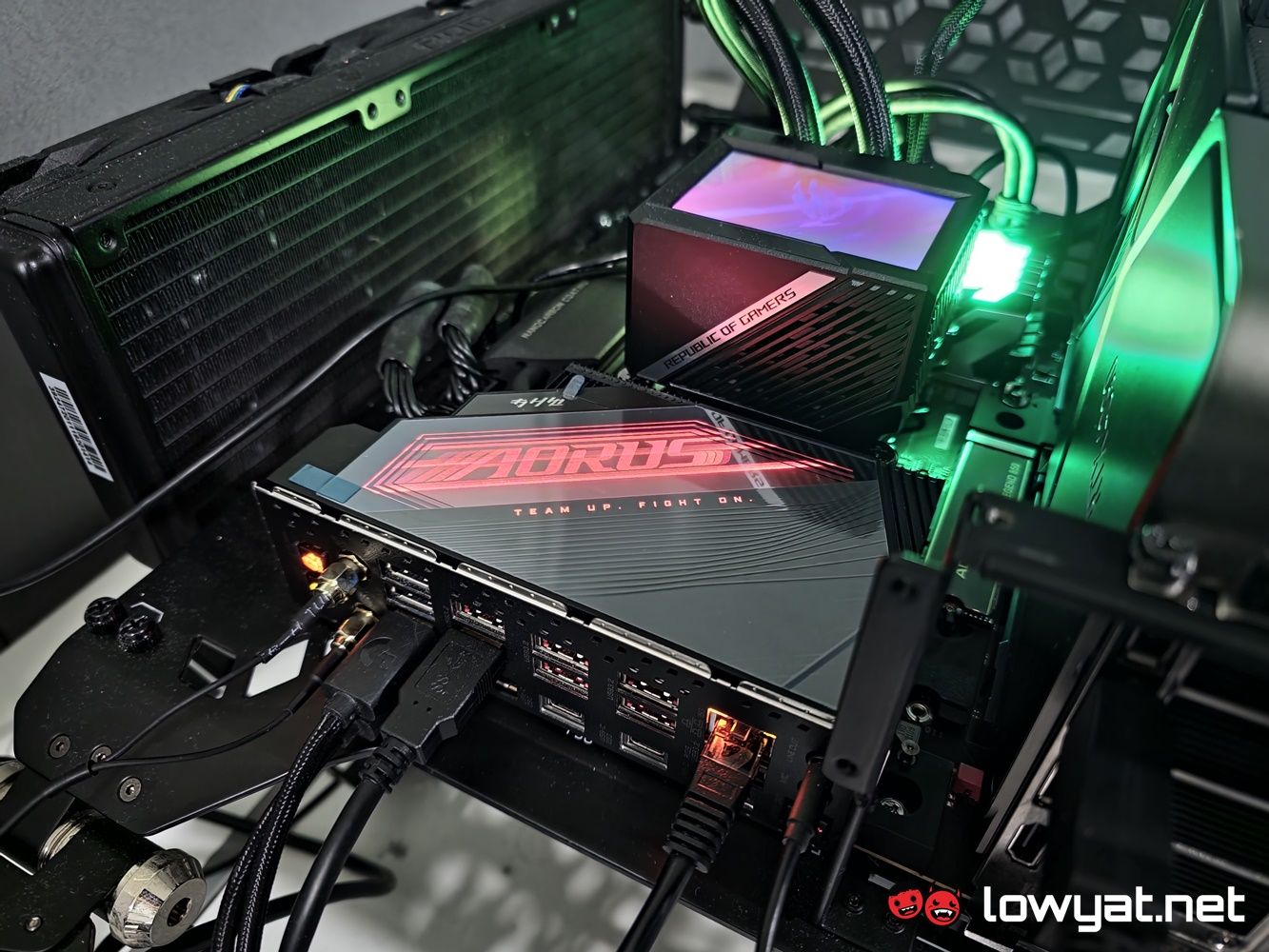 The 14600K is, like its predecessor, still a workhorse and proof that all those cores are not just for show. In most synthetic benchmarks, it overtakes the 7600X, be it by a thin margin or by the figurative mile.
The 14600K is, like its predecessor, still a workhorse and proof that all those cores are not just for show. In most synthetic benchmarks, it overtakes the 7600X, be it by a thin margin or by the figurative mile.
On that note and as I mentioned in the previous section, there are some benchmarks where the rival 7600X is missing numbers, such as Cinebench 2024. Again, this is due to the CPU no longer being in my inventory and as such, I am unable to provide the relevant data to it. In hindsight, though, a quick search online shows that its has multi-core and single-core scores of 885 and 115, respectively.
As for gaming, the 14600K proves to be just a little better than the 13600K. With Doom Eternal, specifically, we’re looking at an increased average of 100 fps with the Raptor Lake Refresh, bringing it up to par with the 7600X, at the very least.
With Cyberpunk 2077, the game serves as a reminder and exercise in power. Compared to the 14900K and 7950X, the 14600K, at 1440p, can churn out an average of 120 fps or greater, and that is with the game’s Path-tracing mode and Ray Reconstruction turned on.
As for power consumption and operating temperature, the 14600K is, once again, similar in performance to the 13600K. However, the CPU does run a heck of a lot cooler than its predecessor by nearly 10°C lower, while still consuming the same amount of power to keep it chugging. Having said that, I did notice my AIO working a little harder than usual for this CPU, evidenced by its fans spinning considerably harder.
Conclusion
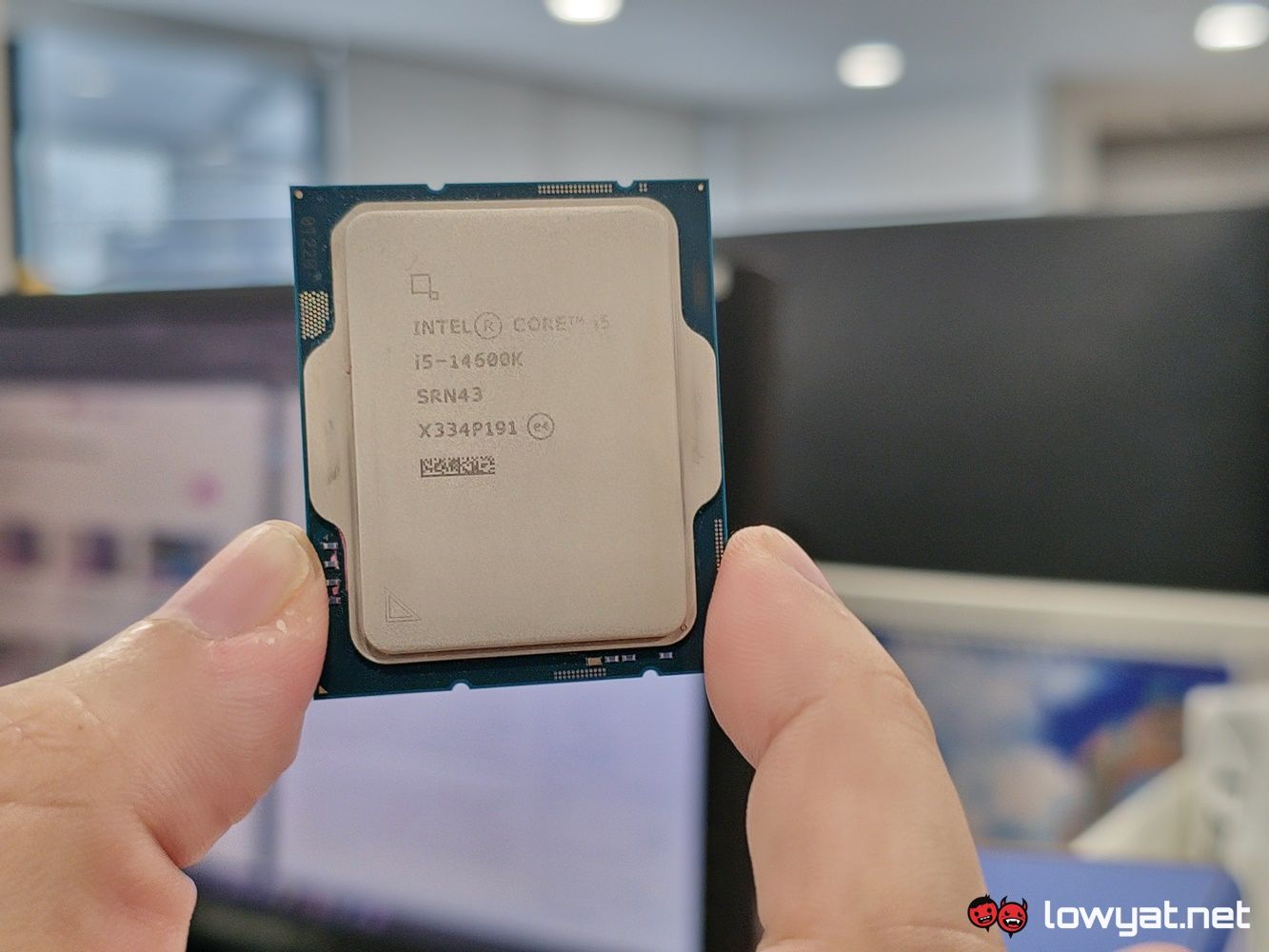 Here’s the bottom line with the Intel Core i5-14600K. If you’re coming in from the 12th Gen Alder Lake equivalent, which is the 12600K, or if you’re transitioning from a Zen 2 or Zen 3-based Ryzen system, then this processor is very likely going to be the “value-oriented” option you’ll want to keep your eye on. If you’re already using a last-gen 13600K, I’ll be blunt: do yourself a favour and save that cash for when Intel officially launches its Meteor Lake desktop variants.
Here’s the bottom line with the Intel Core i5-14600K. If you’re coming in from the 12th Gen Alder Lake equivalent, which is the 12600K, or if you’re transitioning from a Zen 2 or Zen 3-based Ryzen system, then this processor is very likely going to be the “value-oriented” option you’ll want to keep your eye on. If you’re already using a last-gen 13600K, I’ll be blunt: do yourself a favour and save that cash for when Intel officially launches its Meteor Lake desktop variants.
At RM1,450 a pop, recommending the 14600K is a tad bit difficult, even to the folks that are just itching to keep their current system up-to-date. Obviously, this isn’t going to be an issue for folks with deep pockets or oodles of disposable income. Of course, there is the KF variant of the CPU, which is devoid of integrated graphics and also cheaper by RM150, if you’re still looking to get a Raptor Lake Refresh CPU. On another note, I would recommend just getting the 13600K by virtue of it now being cheaper but sadly, that doesn’t apply in Malaysia, especially how reluctant and resistant retailers are to dropping their prices based on the global market.
Follow us on Instagram, Facebook, Twitter or Telegram for more updates and breaking news.


